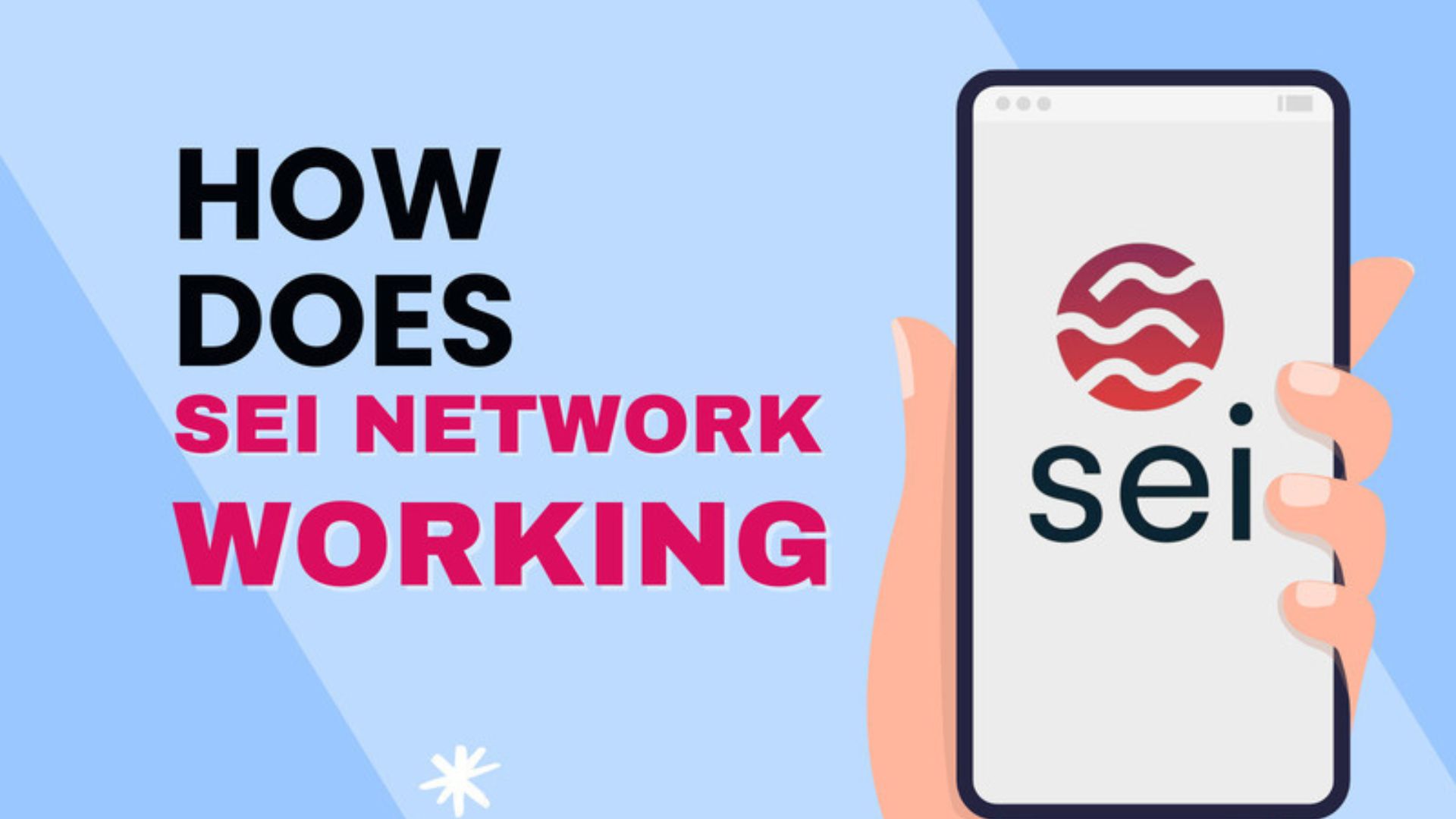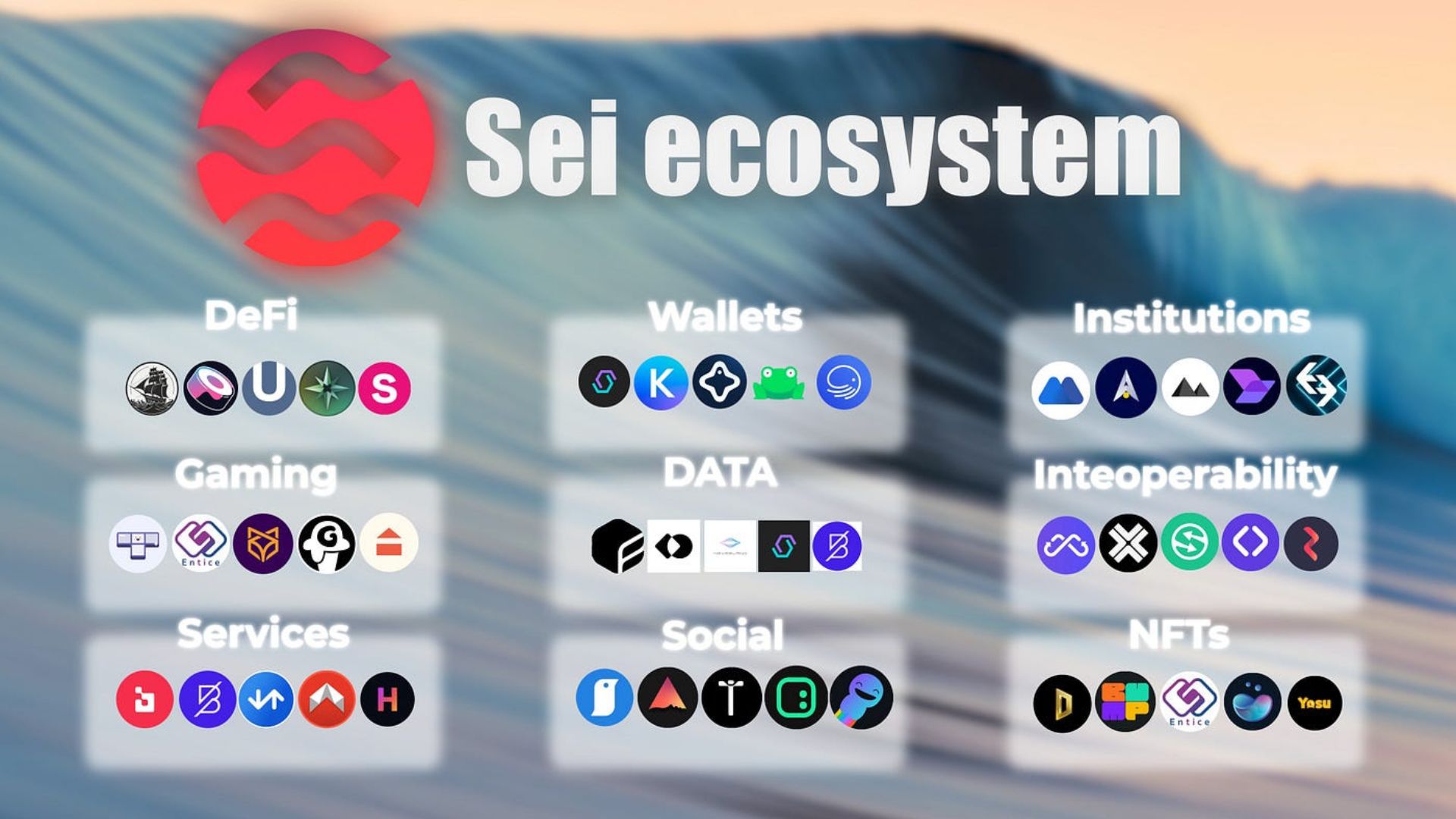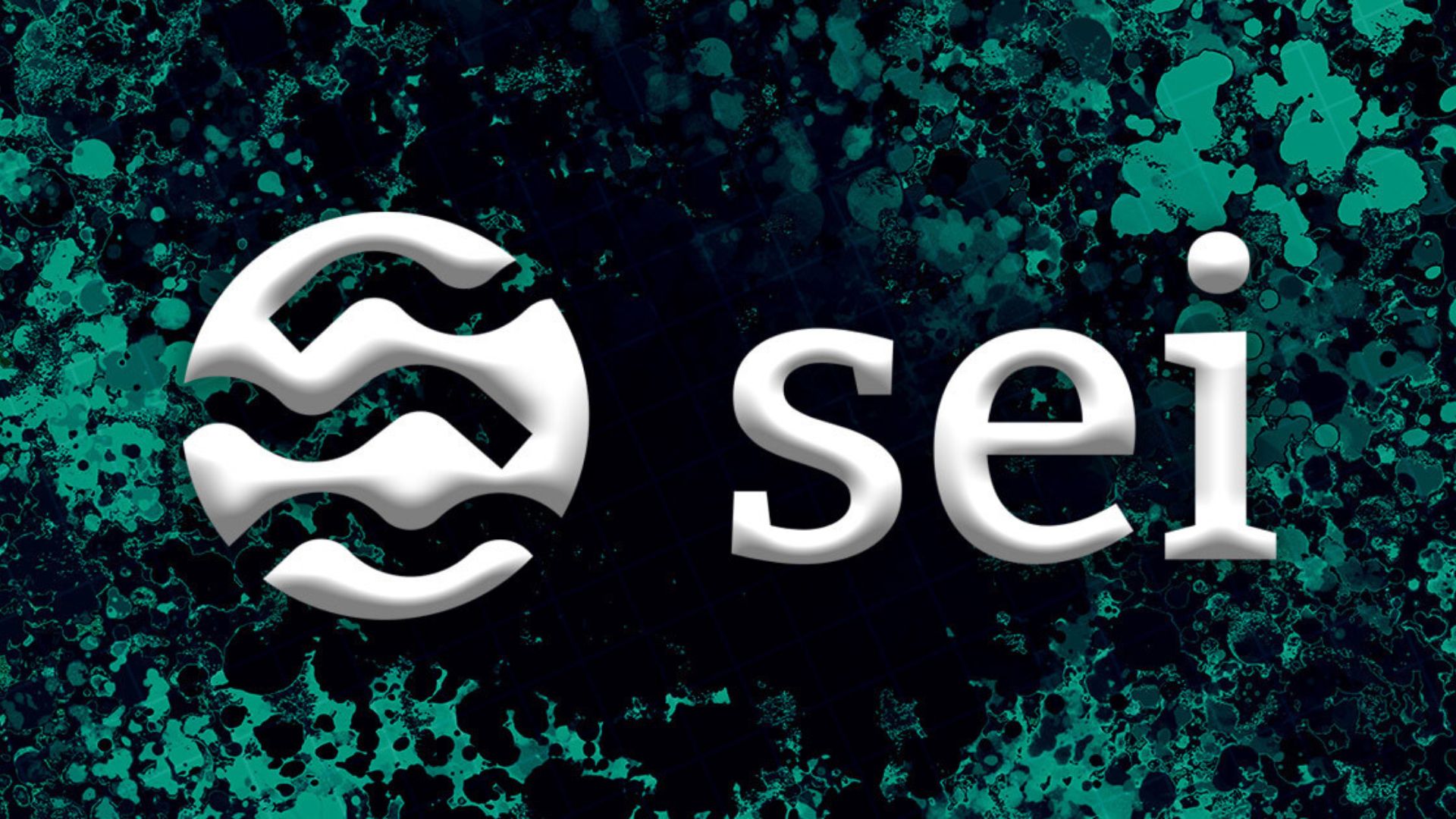Exploring Sei: The Next-Gen EVM Blockchain Revolution

What is Sei (SEI)? Emerging EVM Blockchain Network in 2024. With the combination of Solana’s excellent performance and Ethereum’s top development framework, Sei distinguishes out as the first parallelized EVM blockchain. Sei has been operating on the mainnet since August 2023, prioritizing security, dependability, and high throughput. It asserts it is the quickest tier 1 blockchain due to its continuous block finalization time of 390 ms.
Acknowledging the constraints that existing Layer 1 blockchains place on trading apps—such as concerns with scalability, speed, and reliability—Sei wants to address them by providing specialized infrastructure. To provide seamless user experiences, this infrastructure is specifically designed to meet the needs of trading applications. Sei’s protocol enhancements are based on several features. For example, the Twin-Turbo consensus improves transaction ordering and block propagation. By drastically cutting down on the time validators need to receive a block, this strategy aims to expedite the consensus process.
It will be the first parallelized EVM blockchain with the October 2023 release of the Sei v2 upgrade, as suggested by Sei Labs. By combining the advantages of Ethereum and Solana, this update seeks to create an extremely efficient execution layer that gains from the knowledge and resources surrounding the EVM. The proposal recommends employing optimistic parallelization to facilitate processing more transactions per second.
Sei (SEI) Explained
Sei is the first parallelized EVM blockchain and a high-speed Layer 1 blockchain that might be used as a scaling strategy for the larger Ethereum ecosystem. Reliability, security, and high throughput are prioritized in this blockchain topology because they are essential to operating any DApp developed on Sei effectively. Sei offers a fully decentralized matching service with fast execution and extensive liquidity with its built-in order book architecture.
Sei seeks to address the shortcomings of the existing Layer 1 and Layer 2 infrastructures to resolve the “Exchange Trilemma” that exchange apps encounter when attempting to accomplish decentralization, scalability, and capital efficiency. Sei’s methodology is designed to meet the particular needs of exchange applications, including throughput, speed, and security against front-running.
Because of this focus, Sei is the best option for traditional trading platforms, gaming economies, NFT marketplaces, social trading apps, DeFi, and DEXs. Sei offers an infrastructure that attempts to improve trading apps’ performance and user experience with features including automatic order bundling, built-in parallelization, Twin-Turbo consensus, and a short time to finality. Sei’s focus on trading fills a gap in the blockchain use case landscape, drawing a diverse set of Web3 applications and developers into its ecosystem.
How Does Sei Work?
 How Does Sei Work?
How Does Sei Work?
Sei comprises various software elements that cooperate to maintain the blockchain. While some elements are connected to the execution layer, others are connected to the consensus layer. Sei presents the Twin-Turbo consensus mechanism, a sophisticated method for transaction ordering and block propagation. The time validators spend waiting to receive and process blocks is significantly decreased by this method. Transactions are finalized faster due to its optimization of the consensus process’s prevote, precommit, and commit phases.
Sei commences an optimistic processing of the initial block proposal, unlike typical approaches where block processing begins after the pre-commit stage. This implies that validators write the candidate state to a cache and start processing a block as soon as they get it. The cached data is committed if the block is approved; if it is rejected, the cache is cleared. This method significantly expedites the processing of transactions. Sei’s capability to handle transactions in parallel is one of its main features. Block processing is split into the DeliverTx and EndBlock phases, each using sophisticated parallelization. Sei enhances its overall performance and throughput by simultaneously processing many transactions.
Sei’s infrastructure incorporates a native order-matching engine, enabling decentralized and effective order-matching for trading applications. To minimize front-running and maintain fair trading, this engine provides features like regular batch auctions and consistent clearing prices, which enable DEXs to implement their order books at the chain level. Thanks to Sei’s flexible and asset-agnostic matching engine, decentralized exchanges can choose how to represent assets. This feature offers flexibility in managing various trading assets, such as NFTs and tokens.
Chain-level order bundling and client order bundling are two ways that Sei improves performance. This increases app throughput and lowers the latency of many virtual machine instantiations. Sei upholds governance and security norms, guaranteeing the blockchain’s dependability and transparency. This comprises procedures that allow validators to take part in decisions related to governance and enforce the network’s integrity. To facilitate optimistic parallelization and efficient state storage, Sei V2 is expected to modify the execution layer. Additionally, a new component supporting EVM intelligent contracts will be introduced. These contracts will be able to communicate with other Cosmwasm smart contracts and gain from the modifications made to consensus and parallelization.
Why is Sei v2 Unique?
Sei’s specialization enables it to manage the unique needs of trading platforms, NFT marketplaces, DeFi infrastructure, and social or gaming DApps effectively. These needs include optimized order book management, low latency, and high throughput—essential for a seamless and practical trading experience. Sei hopes to boost transaction performance significantly by implementing parallel transaction processing. This is crucial for trading applications requiring high-performance capabilities to handle massive transactions effectively.
Sei’s infrastructure has been optimized to meet the specific requirements of decentralized exchanges, including quick execution and extensive liquidity. By optimizing, DEXs based on Sei can provide a competitive trading environment on par with centralized exchanges. To ensure that the platform can manage a high volume of trading activities without jeopardizing the integrity and security of the network, Sei strikes a balance between scalability and security.
There are four significant advancements in Sei v2:
Backward compatible EVM
With Sei’s integration of Geth, developers may take advantage of the wide range of Ethereum tools, including MetaMask, Foundry, Remix, and Hardhat, and enjoy full EVM bytecode compatibility. To further improve Sei’s building experience, developers may deploy audited smart contracts from blockchains that are compatible with EVM version two without changing any code, thanks to Sei v2.
Optimistic parallelization
This contrasts blockchains that allow for optional parallelization, such as Solana. Smart contracts are automatically parallelized by Sei, saving developers from doing this work by hand. This streamlines the development process by allowing the chain to support parallelization without requiring developers to identify any dependencies.
SeiDB
By separating state storage from state commitment, SeiDB enhances the storage layer. This division will enable new complete nodes to be put up more quickly by cutting down on state bloat and block processing time. Sei DB also reduces state bloat, improves state read/write performance, and streamlines the synchronization process for newly launched nodes, making it easier for them to catch up to the network. All of these improvements are meant to maximize accessibility and network performance.
Sei v2
By improving compatibility with current chains, Sei v2 guarantees smooth composability across EVM and other platform-supported execution environments. This breakthrough creates opportunities for elite Ethereum builders and Cosmos ecosystem developers to work together seamlessly, creating a single development environment that capitalizes on the advantages of both platforms.
What is the Sei Ecosystem?
 What is the Sei Ecosystem?
What is the Sei Ecosystem?
Constructed around the Sei blockchain, the Sei ecosystem offers a comprehensive and specialized environment. This ecosystem comprises many parts and players, all adding to its unique attractiveness and functionality. Decentralized exchanges that use Sei’s technical trading infrastructure are the backbone of the Sei ecosystem. These builders profit from Sei’s low latency, high throughput, and integrated order-matching engine, which provide an efficient and user-friendly trading experience that rivals that of centralized platforms.
Showcasing the creativity and diversity of the Sei ecosystem, a number of the highlighted dApps have become industry leaders. Leading the way in rethinking trade solutions, meme community spirit, and decentralized finance (DeFi) are Astroport, Compass Wallet, Fin Wallet, and Seiyans. The following companies stand out for their creative approaches to data provision, asset management, social interaction, and analytics: Pyth, Pallet Exchange, WeBump, Dagora NFT Marketplace, and Flipside. These developers exhibit the depth and breadth of potential in blockchain and cryptocurrency utilities by implementing outstanding apps within the Sei ecosystem.
As more and more developers build within the architecture of Sei, the ecosystem grows and grows. This enhances the ecosystem while also demonstrating Sei’s dedication to providing a broad range of blockchain-based services and solutions, which is in line with the dynamic and diverse character of the Sei network.
What is the SEI Token?
 What is the SEI Token?
What is the SEI Token?
As the primary unit of value and usefulness that links the different parts and features of the network, the SEI token is essential to the SEI ecosystem. The SEI token drives Sei as a decentralized blockchain for “Proof of Stake.” The SEI token has multiple uses throughout the network.
- Network Fees: Pay for transaction fees on the Sei blockchain.
- DPoS Validator Staking: SEI holders can delegate their holdings with validators or stake SEI to run their validator to secure the network.
- Governance: SEI holders can engage in future governance of the protocol.
- Native Collateral: SEI can be used as native asset liquidity or collateral to applications built on the Sei blockchain.
- Free markets: Users can pay a tip to validators to prioritize their transactions, which can be shared with users delegating to that validator.
- Trading Fees: SEI can be used as fees for exchanges built on the Sei blockchain.






























